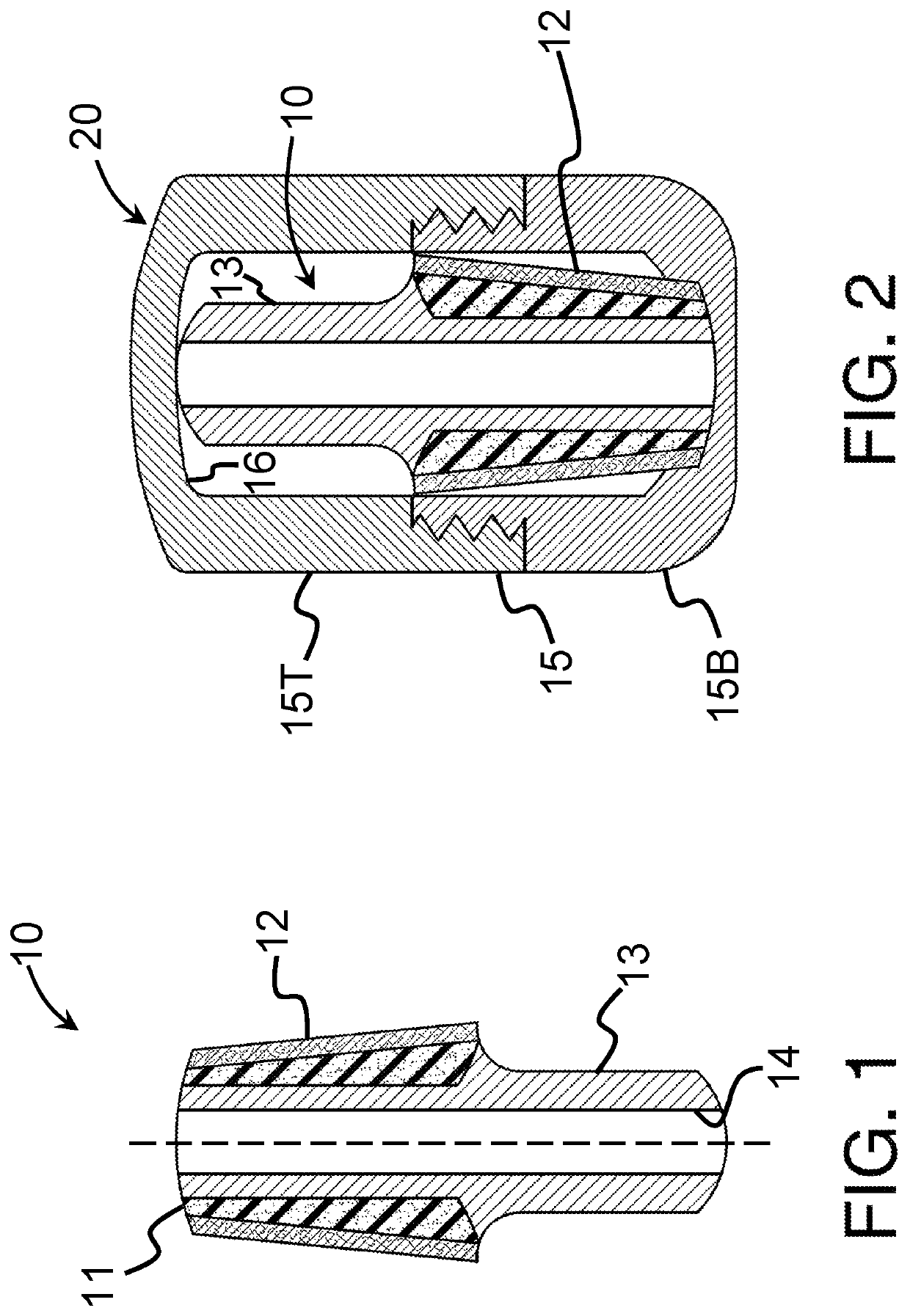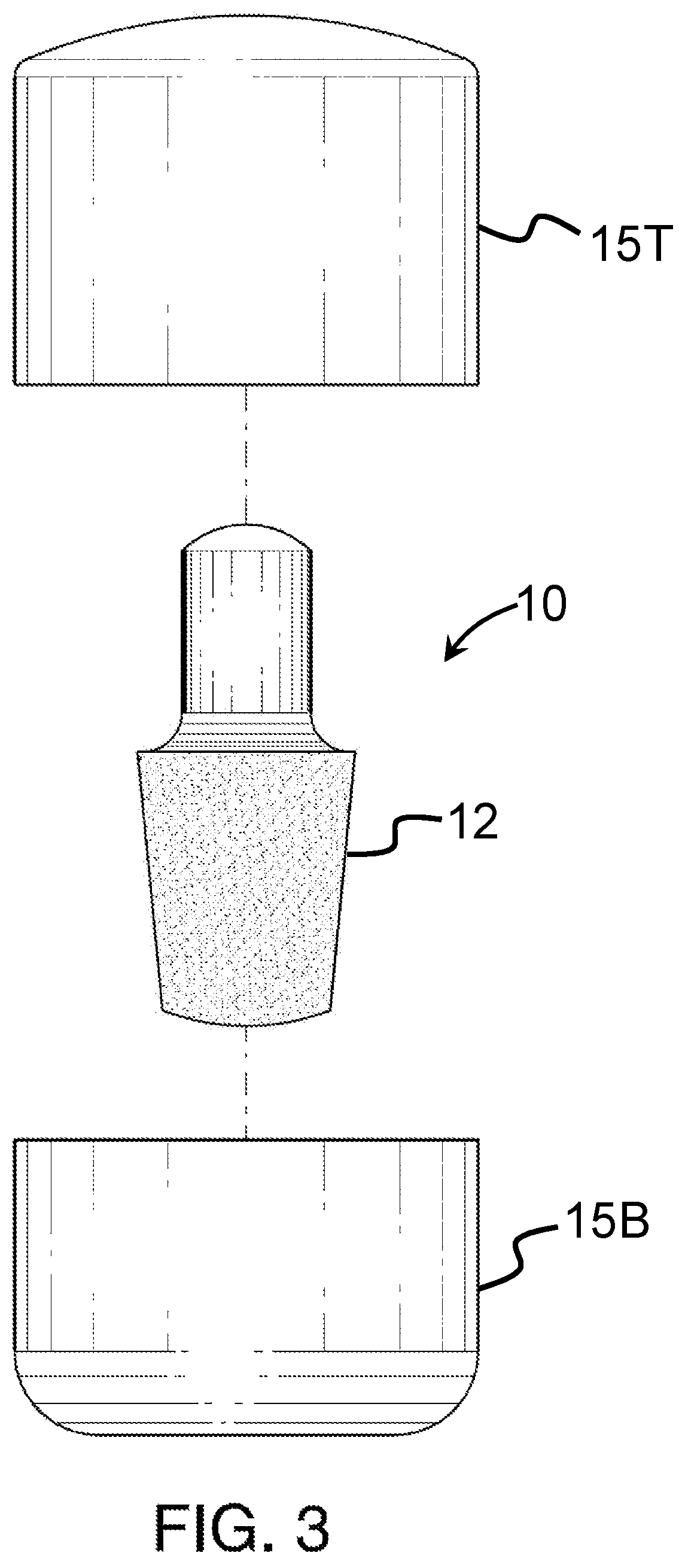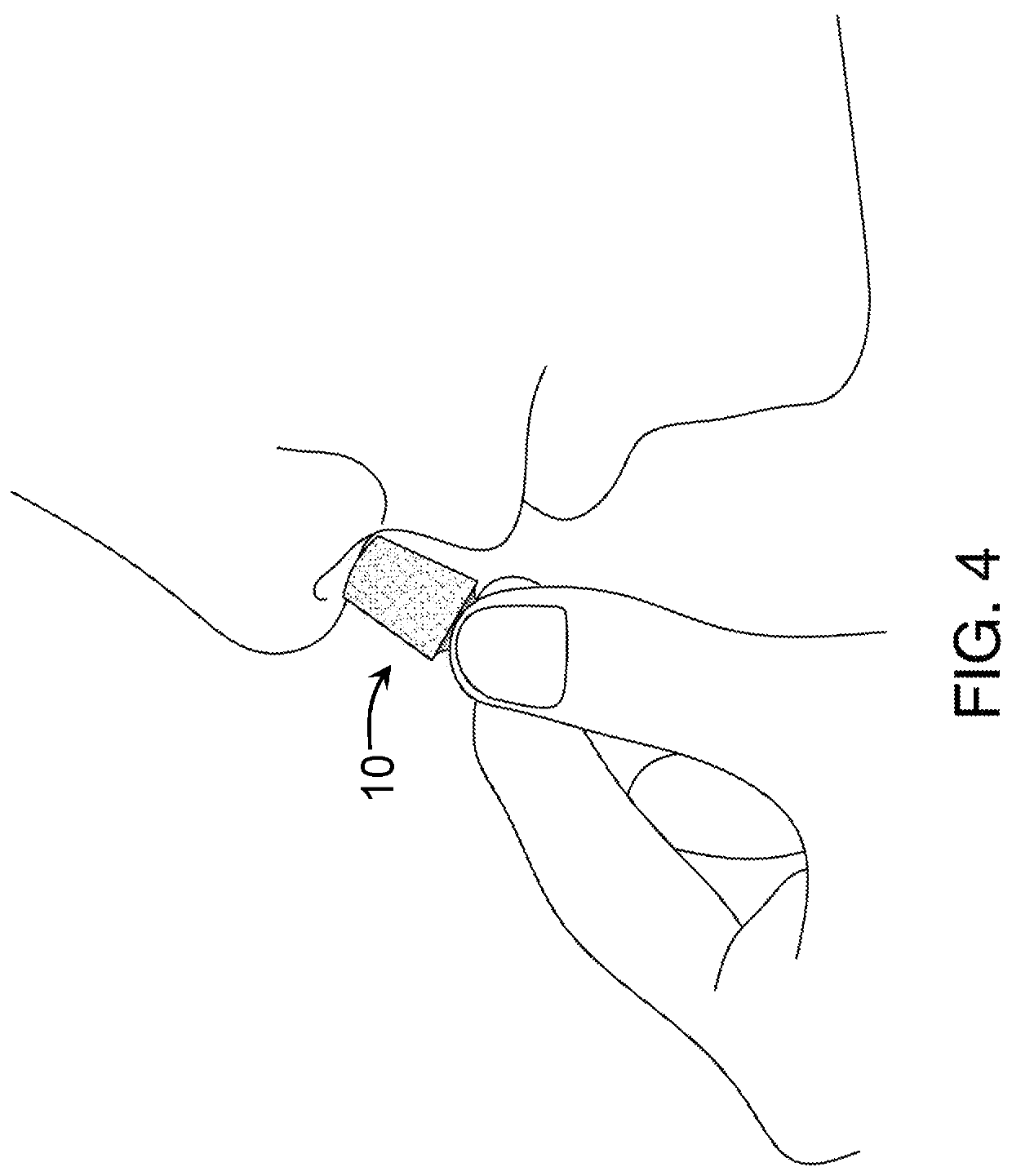Means and method to stop bleeding from the nose
a technology for nose and mouth, applied in the field of nose bleeding prevention methods and devices, can solve the problems of difficult control, not describing an interior passageway, and not imagining an efficient means, and achieve the effect of preventing bleeding and facilitating the insertion of the devi
- Summary
- Abstract
- Description
- Claims
- Application Information
AI Technical Summary
Benefits of technology
Problems solved by technology
Method used
Image
Examples
Embodiment Construction
[0017]FIG. 1 is a cross sectional view of the device 10 that is designed for insertion into a patient's nose to stop the bleeding in that nose. The device 10 has a tapered, sponge-like portion 11 that includes a blood clotting drug coating 12 that can stop bleeding in the nose. The drug 12 could be chitosan, aluminum chloride-6-hydrate 21.3% (ACH) or any comparable medication that can stop bleeding from inside a patient's nostril. It is also believed that the drug ACH has that capability to not only stop bleeding, but to heal that portion of the nostril that has been bleeding so that, after extended usage, the patient will encounter fewer and possibly no more nose bleeds. The device 10 has a handle 13 that has a smaller outside diameter within the sponge-like section 11 and extends with a larger outside diameter downward beyond the tapered portion of the device 10. A hole 14 extends through the entire length of the handle 13. One purpose of the hole 14 is to allow for excess blood t...
PUM
 Login to View More
Login to View More Abstract
Description
Claims
Application Information
 Login to View More
Login to View More - R&D
- Intellectual Property
- Life Sciences
- Materials
- Tech Scout
- Unparalleled Data Quality
- Higher Quality Content
- 60% Fewer Hallucinations
Browse by: Latest US Patents, China's latest patents, Technical Efficacy Thesaurus, Application Domain, Technology Topic, Popular Technical Reports.
© 2025 PatSnap. All rights reserved.Legal|Privacy policy|Modern Slavery Act Transparency Statement|Sitemap|About US| Contact US: help@patsnap.com



